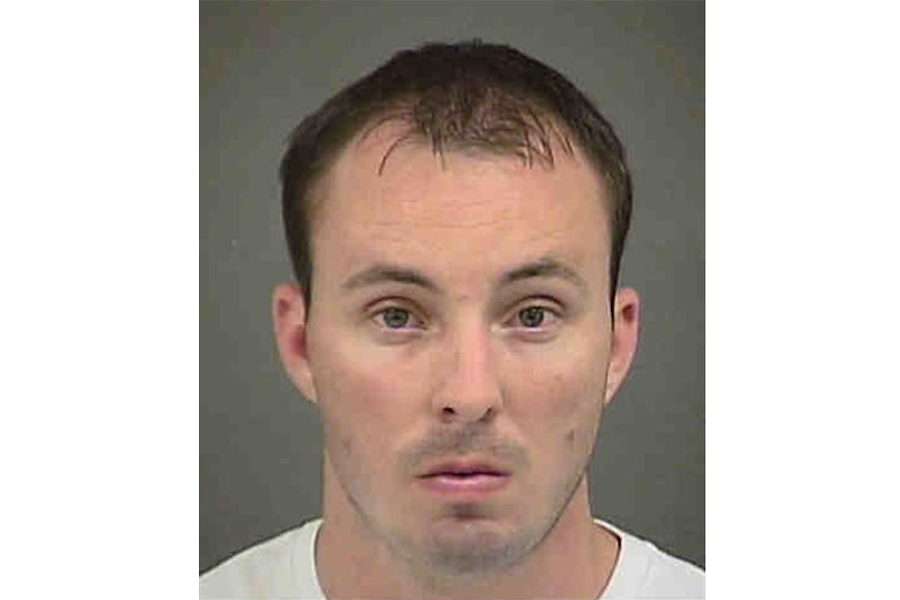N.C. police officer faces trial for shooting of unarmed man in 2013
Loading...
On September 24, 2013, former Florida A&M football player Jonathan Ferrell crashed his car into some trees at 2:30 a.m. in a subdivision outside Charlotte, N.C. Having lost his phone, the 24-year old knocked on a woman’s door seeking help but she thought he was a burglar.
The worried woman dialed 911 and three Charlotte-Mecklenburg county police officers arrived at the scene. When Ferrell approached them, one of the officers, Randall Kerrick, drew his firearm and shot 12 rounds, Reuters reports. Ten of them hit Ferrell, ending his life.
In January, police charged 29-year old Mr. Kerrick with voluntary manslaughter hours after the shooting. The jury selection for his trial is set to begin Monday.
If convicted, Kerrick may face up to 11 years in prison, The Associated Press reports. Kerrick, who is white, was with two more experienced African-American officers, who did not reach for their guns, according to Reuters.
Former Police Chief Rodney Monroe said Kerrick had used excessive force and the case’s evidence warranted his arrest. In turn, Ferrell’s family sued Charlotte-Mecklenburg County, its police department, and Mr. Monroe. In May they received a $2.25 million settlement.
Kerrick’s attorneys claim Ferrell had ignored orders to stop approaching the officers and to lie on the ground. According to The Associated Press, their testimony will show that Ferrell had been smoking marijuana and drinking before the crash. Yet, according to Reuters, a toxicology report from November found no traces of drugs in Ferrell’s system and a blood-alcohol level below the legal limit for driving.
A few weeks ago, the defense attorneys tried to change the trial’s venue, claiming the case’s publicity would thwart the officer’s chances of getting a fair trial in the county, but the judge denied their request.
At face value, this case may sound familiar to some. Ferrell’s case predates highly publicized incidents in Ferguson, Mo., and Staten Island, N.Y., in which black men were killed by white officers, igniting a national conversation on race relations and police brutality.
More recent cases have continued to fuel the issue, including that of a South Carolina police officer who fatally shot an unarmed African-American man in April. Though that officer was charged, officers in some high-profile incidents have not been indicted.
But several factors set Ferrell’s case apart from other incidents, and they help explain why this case didn't spark national demands for justice.
For one thing, Charlotte-Mecklenburg County’s has had fewer problems with race relations and civil rights in the past than Staten Island or Ferguson, says Gloria J. Browne-Marshall, an associate professor focusing on the Supreme Court and constitutional law at New York’s John Jay College of Criminal Justice.
What’s more, she adds, when prosecutors presented Ferrell’s case to the court, they collaborated with the State Bureau of Investigation, as opposed to solely working with the district attorney. “Bringing in that third party, that outside source, is very important in these cases,” says Prof. Browne-Marshall.
A separate investigator looking at the case with “clearer eyes” is exactly what the Ferguson trial lacked. Not only did Ferguson involve a tight-knit relationship between the district attorney and the court, the district attorney in Ferguson looked at the case “half-heartedly,” Browne-Marshall says. “In [Ferrell’s] case, we have the prosecutor as an advocate seeking an indictment."
Within the grand jury system, the prosecution can return as many times as it chooses when it seeks an indictment. In Ferrell’s case, the prosecution didn’t settle for the first grand jury when it said the case lacked evidence, Browne-Marshall says.
“The simple act of having a trial is seen as miraculous,” she notes. “That’s why people have lost faith in the criminal justice system when it comes to police-involved shooting cases.”
She adds that in any other shooting case, a criminal trial would not be unusual. But when an officer is the one pulling the trigger, reaching a trial is an arduous process. Though Kerrick’s trial doesn’t guarantee a specific outcome, Browne-Marhsall says it’s one example of a “working” criminal justice system.
“Justice means having a trial and having the evidence presented,” she says.





